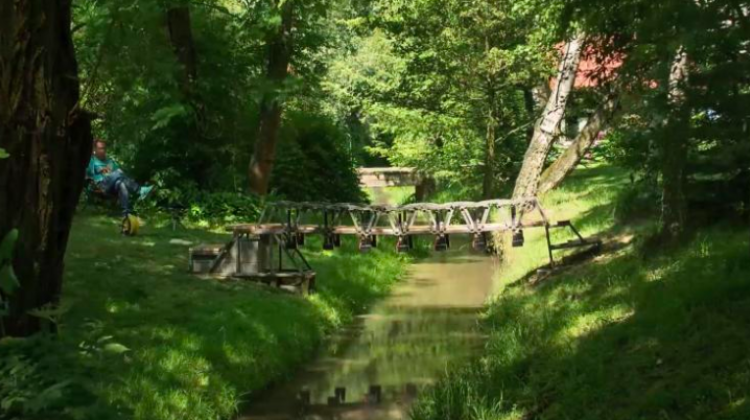AGH students have built Poland`s first mechanically retractable footbridge
 Source: AGH
Source: AGH
Students of AGH University in Kraków have built Poland`s first mechanically retractable footbridge. The footbridge is 3.35 m long and can support a weight of up to 200 kg, the university reports.
The authors modelled their solution on a similar object in the UK. The university spokeswoman Anna Żmuda-Muszyńska told PAP that "the original project is the only structure of this type in Poland". The students created the retractable footbridge prototype as part of engineering work.
The footbridge created by AGH students is 3.35 m long and 0.5 m wide. It supports a weight of up to 200 kg. The model consists of 8 segments, actuated by 14 electronically controlled and DC powered actuators. Platform elements work individually - each segment retracts only after the previous one has finished retracting. The structure is made of steel profiles and wooden platforms. All parts of the footbridge were designed and made by students themselves.
The students` inspiration for creating a retractable footbridge was The Rolling Bridge in London.
Young constructors emphasize that their bridge could be, for example, an element of a botanical garden. In the future, an enhanced and improved model could be a pedestrian crossing in non-typical places, for example near rivers or coastal wharves.
According to young constructors, the advantage of this type of object is its attractiveness in terms of not only aesthetics, but also utility. The model fits in with the current trend of introducing movement into building constructions and is a perfect example of a combination of several fields: construction, mechanics and architecture. Currently, this type of engineering thought is developed by building, for example, folding buildings used during military operations in hard to reach places, including desert operations.
The project was created by students: Michał Pyza, Piotr Roszkowski and Tomasz Tatara. The project supervisors were Henryk Ciurej and Michał Betlej. Work on the model took 18 months.
PAP - Science in Poland
bko/ zan/ kap/
tr. RL
Przed dodaniem komentarza prosimy o zapoznanie z Regulaminem forum serwisu Nauka w Polsce.















